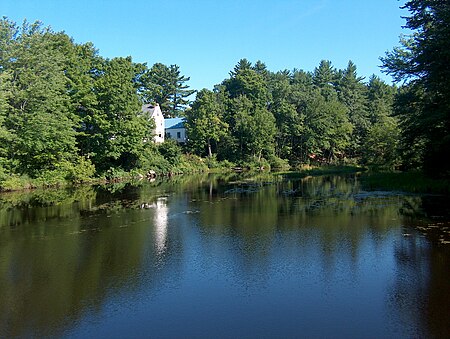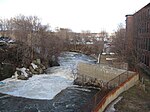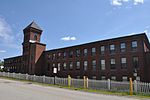Soucook River

The Soucook River is a 29.2-mile-long (47.0 km) river located in central New Hampshire in the United States. It is a tributary of the Merrimack River, which flows to the Gulf of Maine. The Soucook River begins at the outlet of Rocky Pond on the border between the towns of Canterbury and Loudon, New Hampshire. The river flows south through gently rolling terrain, soon entering Loudon and passing near the New Hampshire Motor Speedway. The river passes through the village proper of Loudon, crossing a small dam, and continues south along a more suburban corridor on the outskirts of Concord. The river forms the boundary between Concord and Pembroke and ends at the Merrimack River downstream from Garvins Falls. There are extensive sand and gravel deposits filling the Soucook River valley, which has led to the creation of several large excavation operations close to the river. New Hampshire Route 106 parallels the river throughout its course, crossing the river four times.
Excerpt from the Wikipedia article Soucook River (License: CC BY-SA 3.0, Authors, Images).Soucook River
White Sands Road,
Geographical coordinates (GPS) Address Nearby Places Show on map
Geographical coordinates (GPS)
| Latitude | Longitude |
|---|---|
| N 43.158888888889 ° | E -71.494166666667 ° |
Address
White Sands Road
White Sands Road
03275
New Hampshire, United States
Open on Google Maps











